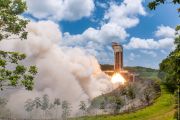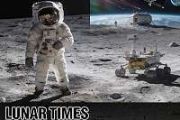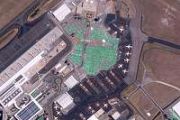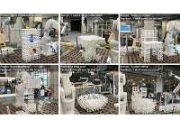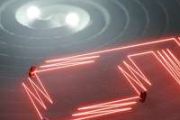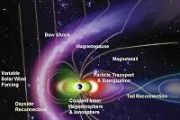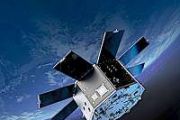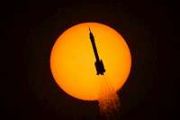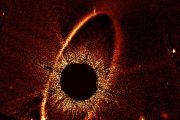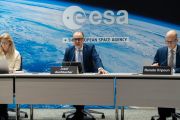
Copernical Team
NASA and Italian Space Agency test future Lunar navigation technology
 As the Artemis campaign leads humanity to the Moon and eventually Mars, NASA is refining its state-of-the-art navigation and positioning technologies to guide a new era of lunar exploration.
A technology demonstration helping pave the way for these developments is the Lunar GNSS Receiver Experiment (LuGRE) payload, a joint effort between NASA and the Italian Space Agency to demonstrate the
As the Artemis campaign leads humanity to the Moon and eventually Mars, NASA is refining its state-of-the-art navigation and positioning technologies to guide a new era of lunar exploration.
A technology demonstration helping pave the way for these developments is the Lunar GNSS Receiver Experiment (LuGRE) payload, a joint effort between NASA and the Italian Space Agency to demonstrate the Spacewalk Preps, Biology Research Wrap Up Week Aboard Station
 The Expedition 72 crew wrapped up the week aboard the International Space Station preparing for a spacewalk to service science and station hardware next week. The orbital residents also continued their biotechnology and human research activities to advance health on Earth and in space.
Two spacewalks are scheduled for Jan. 16 and Jan. 23 to maintain astrophysics research gear, replace adva
The Expedition 72 crew wrapped up the week aboard the International Space Station preparing for a spacewalk to service science and station hardware next week. The orbital residents also continued their biotechnology and human research activities to advance health on Earth and in space.
Two spacewalks are scheduled for Jan. 16 and Jan. 23 to maintain astrophysics research gear, replace adva China's Smart Dragon 3 rocket launches satellites from sea
 China successfully launched its Smart Dragon 3 carrier rocket on Monday morning from a sea-based platform near Haiyang, Shandong province, deploying 10 satellites into space. The mission highlighted the growing capability of sea-based launches as a strategic tool for satellite deployment.
The rocket lifted off at 11 a.m. from a dedicated launch service ship, releasing the satellites into a
China successfully launched its Smart Dragon 3 carrier rocket on Monday morning from a sea-based platform near Haiyang, Shandong province, deploying 10 satellites into space. The mission highlighted the growing capability of sea-based launches as a strategic tool for satellite deployment.
The rocket lifted off at 11 a.m. from a dedicated launch service ship, releasing the satellites into a Blue Origin scrubs key test launch again, eyes Thursday
 Blue Origin, the space company founded by billionaire Jeff Bezos, called off the inaugural launch of its huge new rocket again on Monday evening after facing weather issues.
The company said it would aim for early Thursday morning at the earliest, with a new three-hour window starting at 1:00 am (0600 GMT).
An initial test launch of the towering 320-foot (98-meter) rocket, dubbed New Gle
Blue Origin, the space company founded by billionaire Jeff Bezos, called off the inaugural launch of its huge new rocket again on Monday evening after facing weather issues.
The company said it would aim for early Thursday morning at the earliest, with a new three-hour window starting at 1:00 am (0600 GMT).
An initial test launch of the towering 320-foot (98-meter) rocket, dubbed New Gle Nuclear electric propulsion technology could make missions to Mars faster
This request seems a bit unusual, so we need to confirm that you're human. Please press and hold the button until it turns completely green. Thank you for your cooperation!
Press and hold the button
If you believe this is an error, please contact our support team.
185.132.36.159 : 8dbf4495-e95d-45c1-bb38-509f2df9
While Blue Origin waits, SpaceX launches again with booster on record 25th flight
This request seems a bit unusual, so we need to confirm that you're human. Please press and hold the button until it turns completely green. Thank you for your cooperation!
Press and hold the button
If you believe this is an error, please contact our support team.
185.132.36.159 : f2e56577-c4f0-4ec7-bd5d-f48cce1c
ESA welcomes Slovenia as 23rd Member State

Slovenia has celebrated its status the European Space Agency's 23rd Member State with a day of space activities including a primetime television broadcast from the Herman Potočnik Noordung Space Technology Center in Vitanje.
XMM-Newton catches giant black hole’s X-ray oscillations

The European Space Agency's XMM-Newton has detected rapidly fluctuating X-rays coming from the very edge of a supermassive black hole in the heart of a nearby galaxy. The results paint a fascinating picture that defies how we thought matter falls into such black holes, and points to a potential source of gravitational waves that ESA’s future mission, LISA, could see.
Blue Origin pushes back first launch of giant New Glenn rocket
This request seems a bit unusual, so we need to confirm that you're human. Please press and hold the button until it turns completely green. Thank you for your cooperation!
Press and hold the button
If you believe this is an error, please contact our support team.
185.132.36.159 : 0cfefedd-5218-452a-8328-c0fdc919
Blue Origin scrubs first launch of giant New Glenn rocket
 Blue Origin's highly anticipated launch attempt for its New Glenn rocket, scheduled for today, has been scrubbed. The decision to postpone the maiden orbital flight comes as the company prioritizes safety and thorough analysis before proceeding. "Pointy end up!" CEO Dave Limp had posted on X earlier, underscoring the excitement surrounding the launch of the 320-foot-tall rocket from Cape Canaveral Space Force Station.
Blue Origin's highly anticipated launch attempt for its New Glenn rocket, scheduled for today, has been scrubbed. The decision to postpone the maiden orbital flight comes as the company prioritizes safety and thorough analysis before proceeding. "Pointy end up!" CEO Dave Limp had posted on X earlier, underscoring the excitement surrounding the launch of the 320-foot-tall rocket from Cape Canaveral Space Force Station. 











